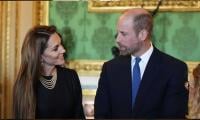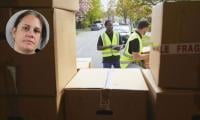Pandemic ‘forced educators to consider new ways of evaluating student-learning’
“Online classes, online exams,” chanted students across Pakistan in early 2021 as they took to the streets to protest against plans to conduct in-person examinations during the pandemic.
The protests went far beyond the usual complaints about examinations as students raised a number of concerns around the effectiveness of online learning, the safety of in-person examinations and, most importantly, whether their performance would be assessed fairly.
The protest shone a light on assessment, a key aspect of teaching and learning that rarely gets attention. When we hear the word, assessment, it is common to think of rows of students taking a standardised examination in a large hall, but the true scope of assessment is much broader as it refers to the entire system that seeks to measure whether the goals of education are being met.
At the core of assessment are questions such as: how can we be sure that students are really learning? What teaching methods or approaches are most effective? If teaching methods have changed in the pandemic shouldn’t we also revise how we assess student performance?
Assessment can come in many forms, from standardised, simultaneous examinations to in-class quizzes, group projects and vivas. While there are many ways to assess student performance, robust assessment must meet some criteria.
Fairness is one of the determining characteristics of good assessment, explains Dr Naveed Yousuf, associate director at the Aga Khan University Examination Board, AKU-EB. For an assessment to be considered fair, it must be accessible by all students and presented in a format students are familiar with. There are two other features of good assessments: validity and reliability. For an assessment to be valid and reliable, it must be aligned with learning objectives, be free of errors and be able to accurately measure student performance.
The onset of Covid-19 presented immense challenges for teaching, learning and assessment. While a number of private schools were able to transition online and resume classes, in public schools learning was halted altogether. In the midst of all these challenges, teachers and school management also had to consider how to assess student-learning online. Many schools and their faculty were unprepared for any other kind of assessments other than pen and paper tests.
Commenting on the impact of the pandemic, Dr Sherwin Rodrigues, assistant professor at the Aga Khan University’s Institute for Educational Development (AKU-IED), notes that the online environment meant that instructors could no longer control the environment within which students would attempt assessments raising questions about fairness.
Had exams taken place within the institution, they could have ensured that there was no noise, no electricity disruptions or internet connectivity problems, and could invigilate the students in a uniform manner.
On a positive note, Dr Yousuf says that the disruptions provided many educators with an opportunity to actively think about how to ensure assessment would still be fair and valid.
“The debate about assessment is much deeper now,” says Dr Yousuf. “Educators are looking beyond the usual concerns such as how to curb cheating and are focusing on what assessment is truly about: how well are students learning?”
Another positive development to emerge was educators conducting more frequent assessments as opposed to the traditional method of a single test at the end of a course. Many were dubious about whether students were actually learning in online classes and so they utilised different types of technology to gauge student understanding. Game-based platforms like Kahoot and Mentimeter enabled instructors to take quizzes easily and efficiently.
Other methods of assessment such as open-book exams, research projects and oral exams were also utilised. Dr Rodrigues believes educators are now tougher, wiser and more comfortable using alternative forms of assessment.
How can this momentum be carried forward? Dr Yousuf recommends that we think of how we can use technology and new modes of testing to make assessment more valid and reliable. “Educators should also ask themselves how assessments can be done more efficiently and frequently. There’s no need to focus solely on paper-pencil examinations instead we can explore new ways of assessment,” explains Dr Yousuf.
That way assessments can go beyond measuring performance and inform teachers about whether they need to revise or reinforce concepts. Dr Yousuf adds that assessment should involve students and be interactive. For example, students can grade each other’s tests using rubrics or scoring guides. Rubrics can help students determine their own strengths and weaknesses in a particular area whether it be essay writing or oral presentations.
Dr Rodrigues further recommends that instructors should integrate assessment within the curriculum instead of merely administering a summative assessment at the end. As assessment is a way for learners to show what they have learnt, low-stakes forms of assessment such as interactive quizzes should be more regularly used throughout the academic term.
The pandemic has helped educators focus more on the essence of assessment which is how to ensure meaningful, long-lasting learning despite the typical and unexpected challenges that occur during teaching and learning.
-
 Prince Harry Hopes To Show Archie, Lilibet Where He 'grew Up'
Prince Harry Hopes To Show Archie, Lilibet Where He 'grew Up' -
 Kristin Davis Dicusses Fate Of Her Sex And The City Character
Kristin Davis Dicusses Fate Of Her Sex And The City Character -
 Zara Larsson Steps Up Criticism Against 'evil' Policies
Zara Larsson Steps Up Criticism Against 'evil' Policies -
 Adam Sandler Jokes About Aging As He Accepts Career Honour
Adam Sandler Jokes About Aging As He Accepts Career Honour -
 Royal Stalker Cases Increase Following Harry, Meghan's Marriage: Report
Royal Stalker Cases Increase Following Harry, Meghan's Marriage: Report -
 Sarah Ferguson Eyes Princess Diana’s Private Letters In Bid To Secure Future
Sarah Ferguson Eyes Princess Diana’s Private Letters In Bid To Secure Future -
 Andrew Plots Secret Sales Of Royal Jewels Amid Royal Lodge Eviction
Andrew Plots Secret Sales Of Royal Jewels Amid Royal Lodge Eviction -
 Abbott Elementary Star Chris Perfetti Hints At What To Expect From Season 5
Abbott Elementary Star Chris Perfetti Hints At What To Expect From Season 5 -
 Prince William Always Ready To Step Up: ‘He’s Barely Able To Contain His Fury When Kate’s Involved’
Prince William Always Ready To Step Up: ‘He’s Barely Able To Contain His Fury When Kate’s Involved’ -
 Florida Woman ‘tricked Innocent Movers Into Helping Her’ $7k Burglary: Report
Florida Woman ‘tricked Innocent Movers Into Helping Her’ $7k Burglary: Report -
 Harry Deserves Top Protection As King Charles’ Son, Prince William’s Brother
Harry Deserves Top Protection As King Charles’ Son, Prince William’s Brother -
 Meghan Markle Receives Key Advice As Experts Warn She’s Doing Too Much
Meghan Markle Receives Key Advice As Experts Warn She’s Doing Too Much -
 Kelly Clarkson Weighs In On Life Without The Father Of Her Children
Kelly Clarkson Weighs In On Life Without The Father Of Her Children -
 Paul Mescal, Gracie Abrams Committed To 'long Distance' Relationship: Source
Paul Mescal, Gracie Abrams Committed To 'long Distance' Relationship: Source -
 Street Fight Turns Bloody As Innocent Bystander Shot In The Face
Street Fight Turns Bloody As Innocent Bystander Shot In The Face -
 Tom Blyth Shares His Two Cents On The Importance Of Rom Coms
Tom Blyth Shares His Two Cents On The Importance Of Rom Coms



